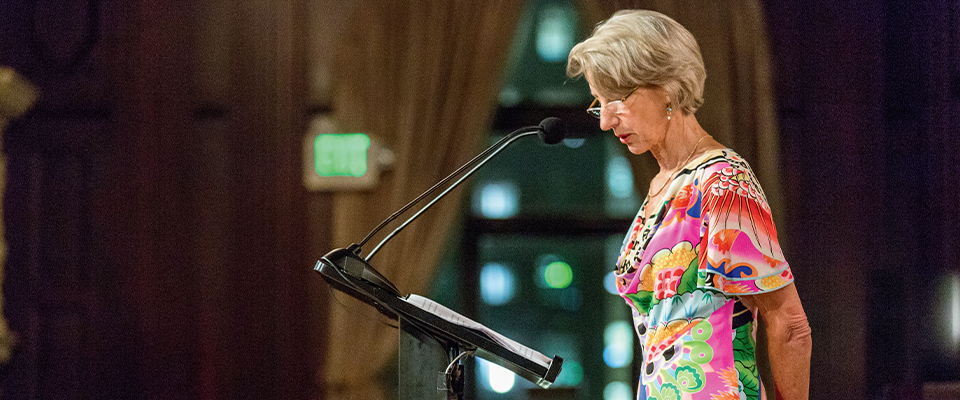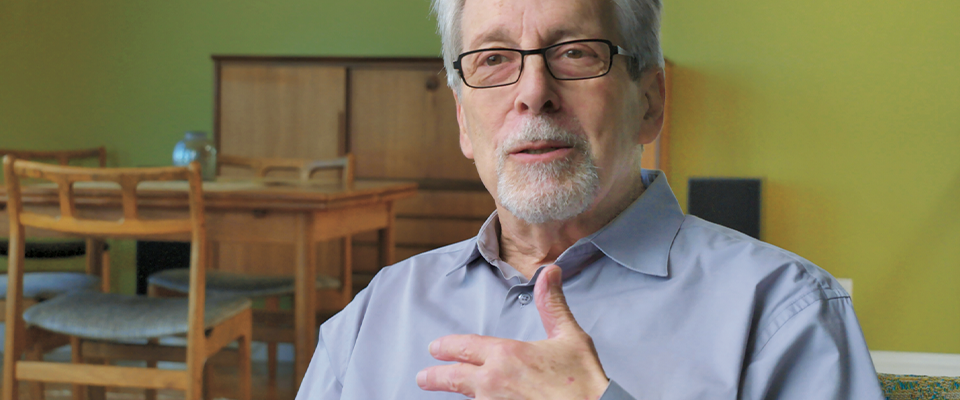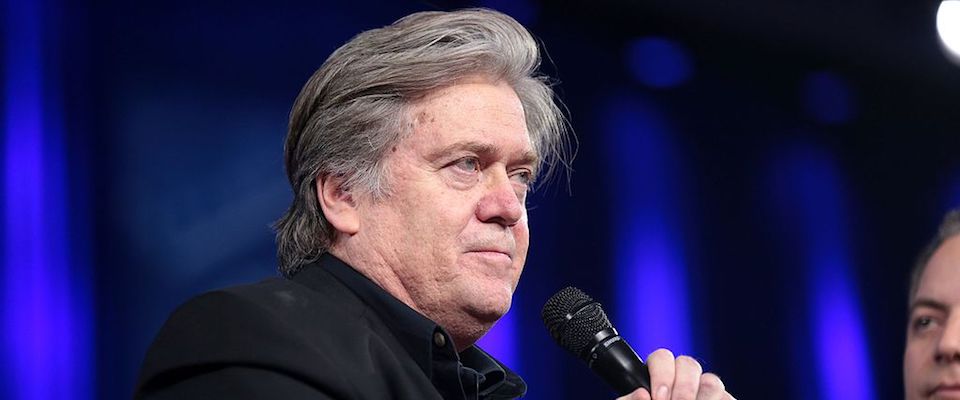When UC Berkeley Chancellor Nicholas Dirks held his first meeting with the campus LGBTQ Advisory Committee a little over a year ago, he began by introducing himself with his personal PGPs: he, him, and his. PGPs, for those who don’t know, are preferred gender pronouns.
It was a young gay English professor (preferred PGPs: he, him, and his) at an elite Midwestern college who first explained to me that it’s no longer unusual at universities, including Berkeley, for students, faculty, and staff to announce the gender pronouns they use for themselves. The professor said he was startled when his department chair advised all faculty to begin each semester by asking students how they preferred to be addressed.
Gender as an intellectual discourse has been an academic hot zone for decades, not least due to the path-breaking work of Berkeley professor Judith Butler in her seminal books, Gender Trouble and Bodies That Matter. But Butler was mostly talking about masculinity and femininity.
Today’s hot zone of gender talk has moved militantly past the male/female binarism and its critique of male hegemony. The T in LGBTQ has now taken center stage. Its aim, largely speaking, is to explode the notion that any of us is exclusively masculine or feminine—culturally, neurologically, or biologically. Rather, we are all of us complex, shifting blends of “masculine” and “feminine” traits—depending upon how those traits are viewed across the passage of time.
The gender struggle starts with language. Indeed, T (which has meant simply transgender) is itself a fraught category—not to be conflated with transvestite nor, necessarily, with transsexual. When Billy Curtis became executive director of Berkeley’s Multicultural, Sexuality, and Gender Centers in 1999, he and his team had a lot of catching up to do.
If Berkeley was behind the curve on trans issues and services, most of America had hardly seen the road. There were—and are still—deep divisions between the LGBTQ letter groups.
“There were literally three transgender students who were out. They would come up to me and say they wanted more work done. They were clearly frustrated with the LGBTQ community not understanding the T part and not really providing resources [for transgender people].” At the minimum, they wanted not to be brushed aside and dismissed as exotic freaks, but seen as young people, many still adolescents, seeking social and psychological support and very often medical advice for their own particular physiological concerns.
If Berkeley was behind the curve on trans issues and services, most of America had hardly seen the road. Although the LGBTQ alphabet acronym had long included T for trans, there were—and are still—deep divisions between the letter groups.
Gay male orthodoxy has too often taken bisexuality to be a passing phase that young men go through in their coming-out stages, while militant lesbian treatises have varied between denouncing bisexuality as a form of gender treason and celebrating women’s superior “innate” gender fluidity. In Women’s Studies circles, the focus has been largely on women’s subordination to men in public policy and the workplace, not to mention rape and household abuse, with less attention given to either gay or lesbian concerns.
Among radical feminists, transwomen have been denigrated as men who in their youth have profited from male privilege, later trying to crash and cash in on the success of the feminist movement—or as lesbian activist Cathy Brennan declared at one lesbian rally, “male persons have cross-dressed in order to gain access to sex-segregated spaces with the specific intent to harm females. This has happened. Many times. That’s all we need to know.”
Transwomen, meaning people born with a Y chromosome who identify as female, have regularly been excluded from many feminist gatherings. Notably and fiercely, they were rejected by the annual Michigan Womyn’s Music Festival north of Grand Rapids, where only “women born as women” are admitted, regardless of whether they have undergone hormonal and/or surgical procedures. A transwomyn’s rump conclave sometimes gathers instead, just outside the festival.
In my own experience, the T (or in some activist circles trans*) in the LGBTQ formula is the most fragile member of the community, but the one demanding intellectual exploration. It is also the most discomfiting. After two or three gin-and-tonics, or after a joint or two have been passed around gay bull sessions I’ve attended, it’s been common for the awkward confessions to bubble up. As in “You just don’t know what they really are,” or “The whole thing with the scalpels and hormones makes me queasy.” All followed by some liberal-ish “Of course they have every right …”—with emphasis on they, who are completely different from us. Indeed, the radical feminist rhetoric of the sort articulated by Cathy Brennan and the leaders of the Michigan Womyn’s Music Festival mimics the same sentiment: We—the real women—don’t know and can’t trust what and who they are.
Queer theory, which emerged in the 1990s in response to gay rights activism as well as feminist scholarship, claimed to dispose of such fears and judgments. The broad argument then was that anyone who did not conform to conventional sexual roles and gender behaviors—man on top, off to the office; woman on the bottom, down to the kitchen—was queer. By embracing the Q-word, activists and scholars sought to upend and convert the slur into pride: queer pride. One selling point of queer theory was that it sought to bring sexuality into the conversation alongside race, gender, and class.
We’re “starting to see the tide shift toward understanding all of the material—and social—harms done by a rigidly defined gender binary.”
As queer theory developed, gender scholarship still focused predominantly on issues of sexuality rather than addressing broader issues of gender, said transgender scholar Susan Stryker, who earned her doctorate from UC Berkeley, while from a transgender perspective the emphasis shifted.
“The whole distinction between homo and hetero sexualities depends on a priori agreement about what constitutes ‘sex,’ on who’s a man and who’s a woman. Destabilizing those material referents … really opens up a whole different set of questions. In addition, trans studies is not organized primarily around issues of sexuality; equally important are questions of gender, bodily difference, health-care provision, technology studies, and a host of other things that have not been central to queer studies.”
At Berkeley, transgender studies were very much on the fringes of gender scholarship until the end of the last decade, about the time that Juana María Rodríguez came into the Department of Gender and Women’s Studies.
“Those of us who have been working on these issues are starting to see the tide shift toward understanding all of the material—and social—harms done by a rigidly defined gender binary,” she told me. “As educators, but also as active, engaged members of diverse queer communities, we see more and more people for whom the social architecture that divides the world into men and women doesn’t work. Bathrooms, homeless shelters, senior living facilities, prisons, health care systems, recreation centers—these are imagined as public institutions. The exclusion, harassment, or misrecognition of gender-nonconforming and trans people turns these public spaces into sites of harassment, intimidation, and violence.”
Billy Curtis was part of the effort to bring T front and center to campus awareness, largely following student demand. “Gender still meant women,” he told me.
“Over the first two years, I really started working with the department of women’s resources and saying we need to have a broader understanding of gender. LGBTQ people were coming in here saying it’s the gender equity resource center. All of a sudden we’re separating women out from [the group], and it’s becoming crazy. Lesbians come in and are they going to see the women’s resource specialist? Or the LGBTQ specialist? Which one are they seeing? We needed to be a little bit more nimble and nuanced in how we understood the needs of students at Berkeley campus.” Together they created T-Cal, or Transgender Cal.
The Department soon began publishing a journal focusing on transgender issues and collaborating with Billy Curtis in bringing in a transgender speaker every semester. Last spring, Rodríguez launched what is set to be an annual international scholarly meeting entitled Trans Studies Matters, which draws on anthropology, linguistics, philosophy, politics, sociology, performance studies, and law, among other disciplines.
Eric Plemons delved directly into the territory that often makes most conventional gays go queasy: knives, drugs, and body building/rebuilding.
One of the key presenters at the meeting, Eric Plemons, delved directly into the territory that often makes most conventional gays go queasy: knives, drugs, and body building/rebuilding. Plemons, a medical ethnographer who holds a doctorate from Berkeley, acknowledged that pop-culture portrayals of trans people often focus on the most graphic details of physical change (particularly the famous cases like Christine Jorgensen’s transformation at the hands of a European surgeon in the 1950s), rather than examining the social, psychological, and medical complexities that these people experience. Plemons also challenged other trans activists who have attacked the often-clichéd fascination with surgical narratives. Rather than suppressing the titillating tales of medical manipulation, he suggested that such tales could, if told properly, reveal to others, including medical practitioners, the complications and biases—racial, socioeconomic, ethnic, and aesthetic—encountered by people going from one gender to another.
For example, what norms of beauty apply to a Nigerian transwoman, and how do they differ from those of a Philippine transman? It is beneath the surgical lamp that presumptions about what constitutes a handsome or beautiful body reveal themselves. As things are now, we leave it to the surgeons and the rest of the medical team who work with trans people to decide what sort of bodies they will get.
This of course is where the story gets very complicated, as in the case of Saúl Amendáriz, otherwise known as Cassandro, recently profiled in The New Yorker magazine. The champion of Mexican lucha libre wrestling, Cassandro bounces about the ring on thighs thick as a bull’s, but never leaves his dressing room without his eyeliner, his long false lashes, and his rouge.
Cassandro exemplifies the sort of queer story and image that fascinates Rodríguez, a Latina single mother who identifies as a “fem queer,” likes being pretty, and enjoys compliments from most any online admirers, male or female. She has been with the same female mate for nine years and rejects reductionist categories. (She once told the magazine InQueery that she wasn’t even certain what a lesbian is.) Families come in many forms, and gender across the centuries has presented many faces, from matriarchal Zapotec market women of Tehuantepec, Mexico, to Hajira transgender communities in South Asia, and even to the boys who played convincing Ophelias in the original productions of Hamlet.
Trans in all these forms is at once a way of being and a performance. Increasingly, however, trans aims to suggest that all of us, if we are able to acknowledge it, are to some degree trans*. We all are traveling through lives that are less and less defined by language, style, presentation, or physical and hormonal capacities. To be human is to be at once male and female, expressed in various degrees and intensities by the roles required of us by our friends, our colleagues, and our enemies. That of course makes many people, particularly those who don’t share the same celebration of gender fluidity, terribly anxious—not least some of the muscle queers of the Stonewall generation, whose pumped torsos and three-day beards are as uniformly unoriginal as the “little houses made of ticky-tacky” from the Malvina Reynolds song, that “all look just the same.” Now safely certified by the marriage courts and the marketplace, their challenge to bourgeois convention is about as subversive as the Shriners.
A former and fallen-away Mormon, Candace had chosen to have his testicles removed and his penis inverted, after which she had grown sumptuous breasts.
The increasingly overt hostile reaction from middle-aged, middle-class gay men to the flowering of trans has been shocking to Billy Curtis. A black gay man who’s had the same mate for decades, he says “That’s just started happening, and we don’t see it on this campus at all—ever.” Where he has seen the backlash is from across the Bay in the Castro District (where he lives)—“particularly among gay men.” Indeed, one of the dark sides of the new social media is how it has allowed bigots of all sorts to express their angry resentment against anyone who threatens established convention—be they racial minorities, feminists, or gender dissenters.
Within the universe of gender minorities, the core uncertainties provoked by the multiple claims of trans identity were almost certain to provoke discomfort, both in academic and activist fields. Ill-spirited as Cathy Brennan and her sister-feminists may be toward a group of people who have manifestly suffered nastier slings and arrows than they have, there exists nonetheless a legitimate question: Once you have struggled for transgender recognition as its own way of being, is it reasonable to claim simultaneous identity as a woman? Is it possible to be both?
I confronted a version of that contradiction on a visit to Utah’s Red River Canyon last year where I met a sturdy, athletic parent of two boys on a rockclimbing expedition. A former and fallen-away Mormon, Candace had chosen to have his testicles removed and his penis inverted, after which she had grown sumptuous breasts.
“So have you found a man here in Utah?” I asked.
“Oh, no,” she answered and smiled. “I live with a girlfriend. I’ve always loved women and women’s bodies. So I suppose I’m a lesbian.”
Neither Cathy Brennan nor the leaders of the Michigan Womyn’s Music Festival nor the gym trainers in the Castro District are likely to welcome Candace’s membership—nor is Candace much interested in joining either of those clubs. Like the ancient god Dionysos, who was at once male and female and neither, and whose rites both lured and terrified the other Greeks, today’s transsexuals are more alarming to people who long for fixity and convention. But the seemingly contradictory life Candace and other trans* people are exploring and discovering and inventing may prove profoundly useful—if scary—to all of us as we slither forward into the future.
Frank Browning is author of The Culture of Desire, A Queer Geography: Journeys Toward a Sexual Self, The Monk and the Skeptic, and The Destiny of Gender (to be published in 2016 by Bloomsbury).
From the Winter 2014 Gender Assumptions issue of California.





















